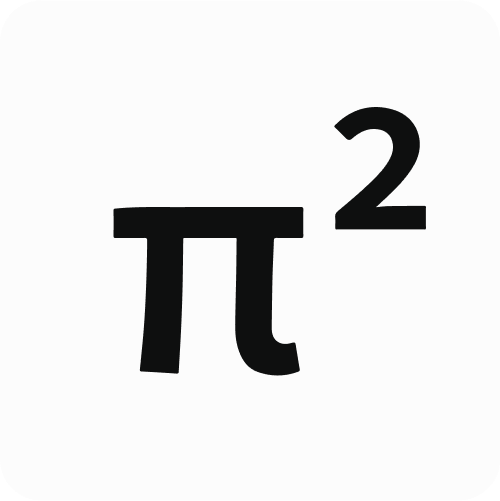Why Web3 Needs a Universal Settlement Layer
Web3 developers are forced to trust that critical systems are operating accurately. How do they verify that these systems are working as intended?

In an age of growing dependence on distributed computing, trust is widely given by developers and users in Web3. This is particularly concerning when it comes to the Programming Languages (PLs) and Virtual Machines (VMs) that are core to blockchain development and operations. As Web3 grows into a fragmented space of various PLs and VMs, each will potentially come with its own Zero Knowledge (ZK) circuit in order to offer the desirable benefits of verifiable computing. As developers, we’re forced to trust that these critical yet very complex systems will operate accurately and efficiently. How do we verify that these critical systems are working as intended?
With billions of lines of code and continuous updates to keep infrastructure aligned with technological advancements, verification of accurate and correct operations becomes a daunting task. Verifiable computing promises correct results for computations done in completely untrusted remote computing environments, which is particularly important for decentralized Web3 infrastructure.
At Pi Squared, we term the present as Verifiable Computing 1.0. Where the challenge lies not only in maintaining trust in the current versions but also in every new update.
We aim to usher in a new era of verifiable computing. An era where correctness and universality are paramount. We call this Verifiable Computing 2.0, and it’s why we’re introducing Pi Squared’s Universal Settlement Layer (USL), a groundbreaking project designed to revolutionize the process of building apps that are multi-chain and multi-language.
What is USL?
USL makes it easier for any developer to create interoperable smart contracts for any blockchain or Programming Language. With USL, developers can identify and minimize trust bases. Additionally, it connects blockchains without moving assets, which means USL limits the possibility of bridging hacks. Furthermore, developers can create higher quality applications, resulting in better and more secure user experiences.
USL brings universal settlement to modular blockchains, settling any claim that is provably correct. It uses the novel Proof of Proof protocol, making it the first project constructed on top of Pi Squared’s core technology. In a decentralized lending application, for instance, a borrow operation is deemed valid only if the claim that the borrower is sufficiently collateralized is mathematically provable, which is checked by verifying the corresponding ZK proof. As a result, USL’s “transactions” are in fact mathematically provable claims, whose correctness is witnessed by independently and efficiently checkable Zero-Knowledge proofs (ZKPs).
Why Does Web3 Need USL?
In simple terms, USL acts as a common verifiable database of true facts, making it unnecessary for developers to use messaging platforms and bridges. This change can significantly simplify the process of building multi-chain applications. It also allows for abstraction of cross-chain capabilities that decentralized applications (dApps) would typically be required to build.
One of the unique features of USL is its ability to explicitly highlight trust assumptions. It exposes the trust base underlying each application, thereby offering a clearer view of the trust dynamics involved in every transaction or any on-chain operation.
The fragmentation within the world of Layer 2 (L2) solutions has become increasingly apparent and poses a significant challenge in blockchain development. USL aims to mitigate this fragmentation, paving the way for a more unified and efficient blockchain ecosystem.
What are the Benefits for Web3
The benefits of USL extend far beyond convenience. For Web3, USL can identify trust bases which will allow builders to minimize trust. It empowers users and developers to make conscious decisions about these trust assumptions.
With USL, developers can use different front ends, wallets, sequencers, and allow users to choose the components they trust. This gives developers and users the freedom to make a conscious decision and take control of their trust assumptions. This flexibility makes trust choices explicit and allows developers to see which components in the generation or execution of a transaction were trusted.
USL is not limited to benefitting developers. Various stakeholders stand to gain from its implementation, including Data Availability (DA) customers, dApps that require a common database, Layer 2 and Layer 3 solutions, and even bridges.
Applications Powered by USL
USL is envisioned to enable the building of new and unique applications for its settlement service. Below, we highlight four application types enabled by USL:
Rollup-in-a-box
Enables the development of L2/L3 rollups and appchains, providing support for various programming languages and virtual machines for both off-chain code and on-chain smart contracts.
Multi-chain bridging
Enables rollups and applications on USL to seamlessly bridge tokens across multiple chains on-chain, eliminating the need for off-chain code.
Cross-chain financial applications
Enables DeFi applications to seamlessly transition between various rollups and appchains by settling transactions on USL, regardless of the differing VMs and platforms used by the involved chains.
Heterogeneous ZK verification
Enables builders to use the ZK platform of their choosing, as USL validates transactions through a zero-knowledge (ZK) proof verification process, utilizing the appropriate ZK backend.
❗️ Learn more about use USL cases - https://docs.pi2.network/verifiable-settlement-layer/what-is-vsl#use-cases
Benefits outside of Web3
In addition to these, the AI space can significantly benefit from USL. Its ability to validate any claim, even in non-blockchain systems, can be invaluable in Artificial Intelligence (AI) operations.
In the rapidly evolving world of Web3, USL stands as a beacon of interoperability and trust. It serves as a vital tool for multi-chain applications, fragmented ecosystems, and AI model providers. As we continue to explore and expand the boundaries of what’s possible, USL will undoubtedly play a pivotal role. If you’re intrigued and want to discover more about USL, we invite you to reach out and check out our docs.

